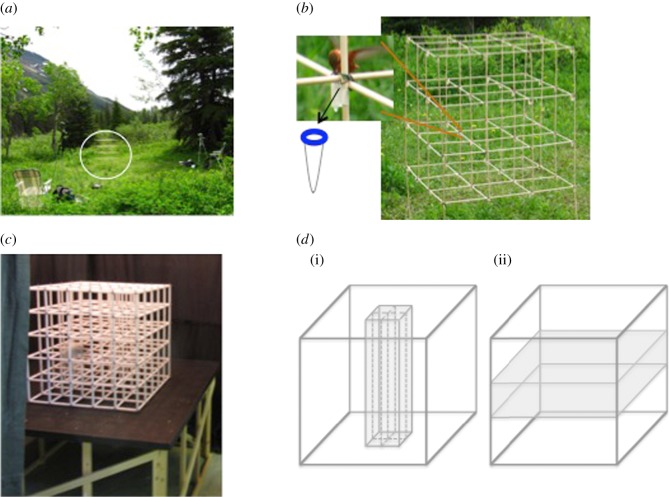Figure 1.
Pictures and representations of both cubic mazes: a photograph of (a) a territory of one bird with a circle showing the maze secured to the ground and two video cameras to film the experiment; (b) the hummingbird 3 × 3 × 3 unit cubic maze (in which each unit was 25 × 25 × 25 cm) with a vial attached to every junction (64 in total). The inset shows a male feeding from the rewarded vial while perching and the arrow points to a schematic of the vial that contained the sucrose; (c) the rat 5 × 5 × 5 unit cubic maze (in which each unit was 10 × 10 × 10 cm) on the 120 × 90 cm platform; and (d) a schematic diagram of a generalized cubic maze showing the location of the reward, marked by an asterisk. (i) The light grey column represents the vertical region through which the animal could move while remaining in the correct x–y component of the reward. (ii) The dark grey plane represents the horizontal region through which the animal could move while remaining in the correct vertical component of the reward. (Online version in colour.)

